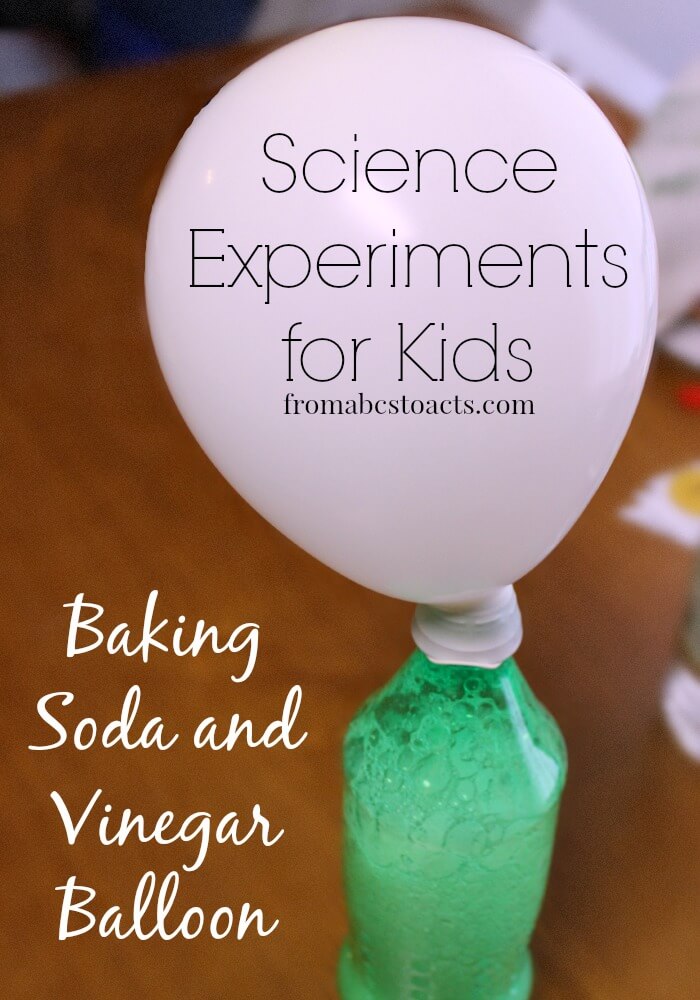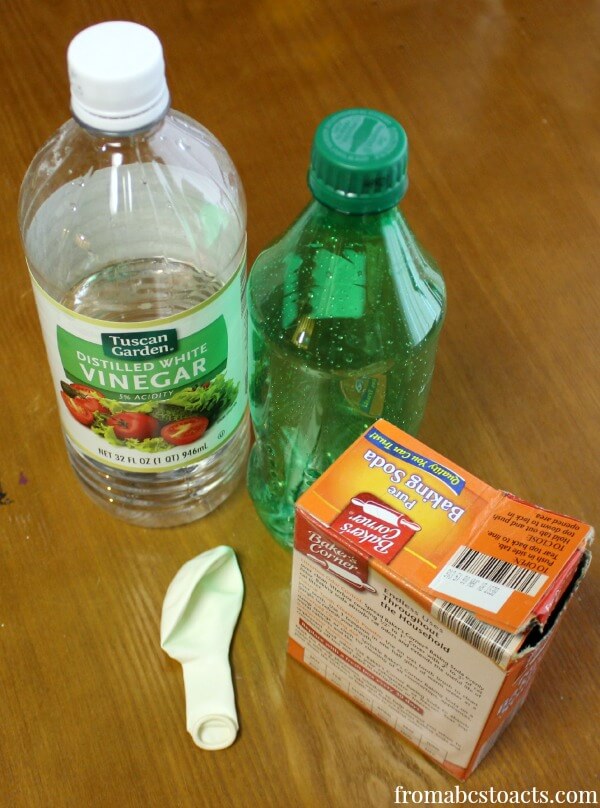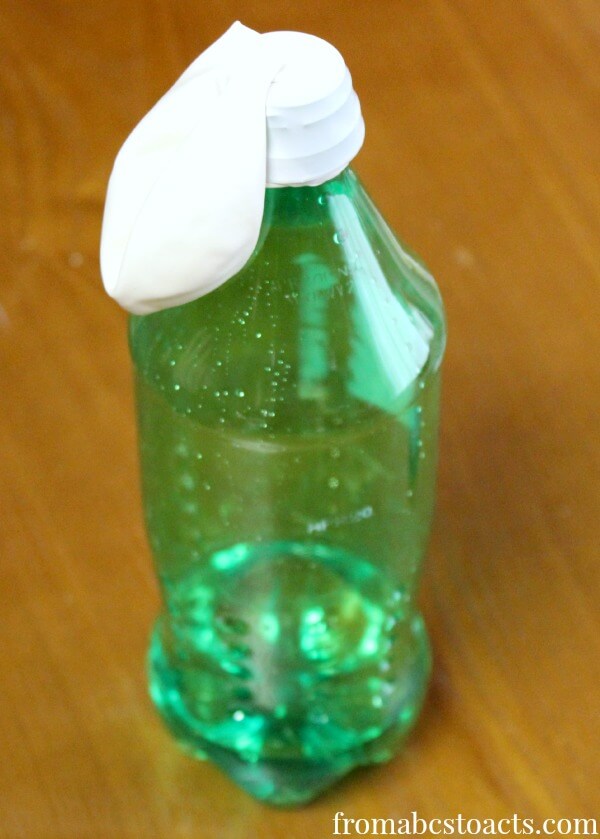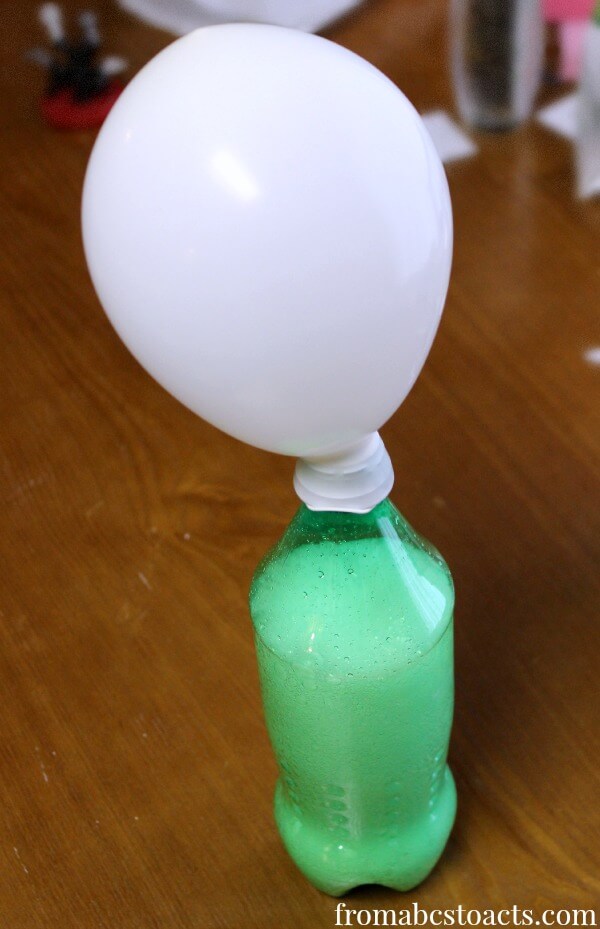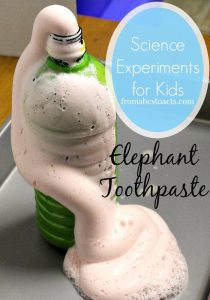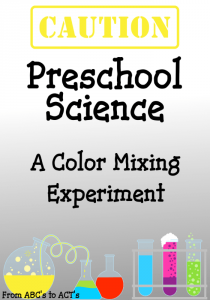This post may contain affiliate links. For more information, please see my full disclosure policy.
Creating a reaction between baking soda and vinegar is a classic science experiment that kids of all ages love to watch.
We’ve actually used the mixture in a few different science experiments ourselves including our green themed experiment and our soda bottle speed boats.
But adding a balloon to the mix just ups the fun factor and makes it seem like a brand new experiment all over again.
Since balloons have added so much fun to our circus preschool theme already, we’ve figured we’d go ahead and throw in one more simple science experiment that the kids will love watching over and over again.
If you’ve ever watched a baking soda and vinegar reaction with your kids, you know just how excited they get when they see all of the bubbles and hear the fizzing as the two parts come into contact with one another.
This experiment uses that reaction to blow up a balloon and the reaction you’ll get out of your preschooler will be even better!
To do this experiment, you’ll need:
- Plastic bottle
- Balloon
- Baking soda
- Vinegar
- Either a small funnel or a piece of paper that you can roll into a cone
Carefully pour about a 1/4 cup of vinegar into your plastic bottle and use a small funnel to put a spoonful or two of baking soda into your balloon. Don’t have a funnel? That’s okay! Just roll a piece of paper into a cone shape so that there is an opening at both ends. Stick the smaller end into the balloon and you use it just as you would a funnel.
Once your balloon is full of baking soda, stretch the opening over the top of your plastic bottle making sure that you don’t spill any of the baking soda into the bottle just yet. You wouldn’t want it to react before you have the balloon all the way on :)
Once you’re sure that your balloon is on securely, have your child tip the balloon up and give it a little shake so that the baking soda falls into the bottle. Almost immediately you should see your balloon start to fill with air.
One of the coolest parts of this experiment is that the balloon is going to stay blown up for a while after the reaction is over. Your child will get to turn it around, take a good look at everything and, if they’re old enough, you can use this opportunity to talk about chemical reactions and why the reaction caused by these two ingredients was able to blow up a balloon.
Even if they’re not quite old enough to understand that quite yet, this is still a fun experiment that kids of all ages can enjoy!
